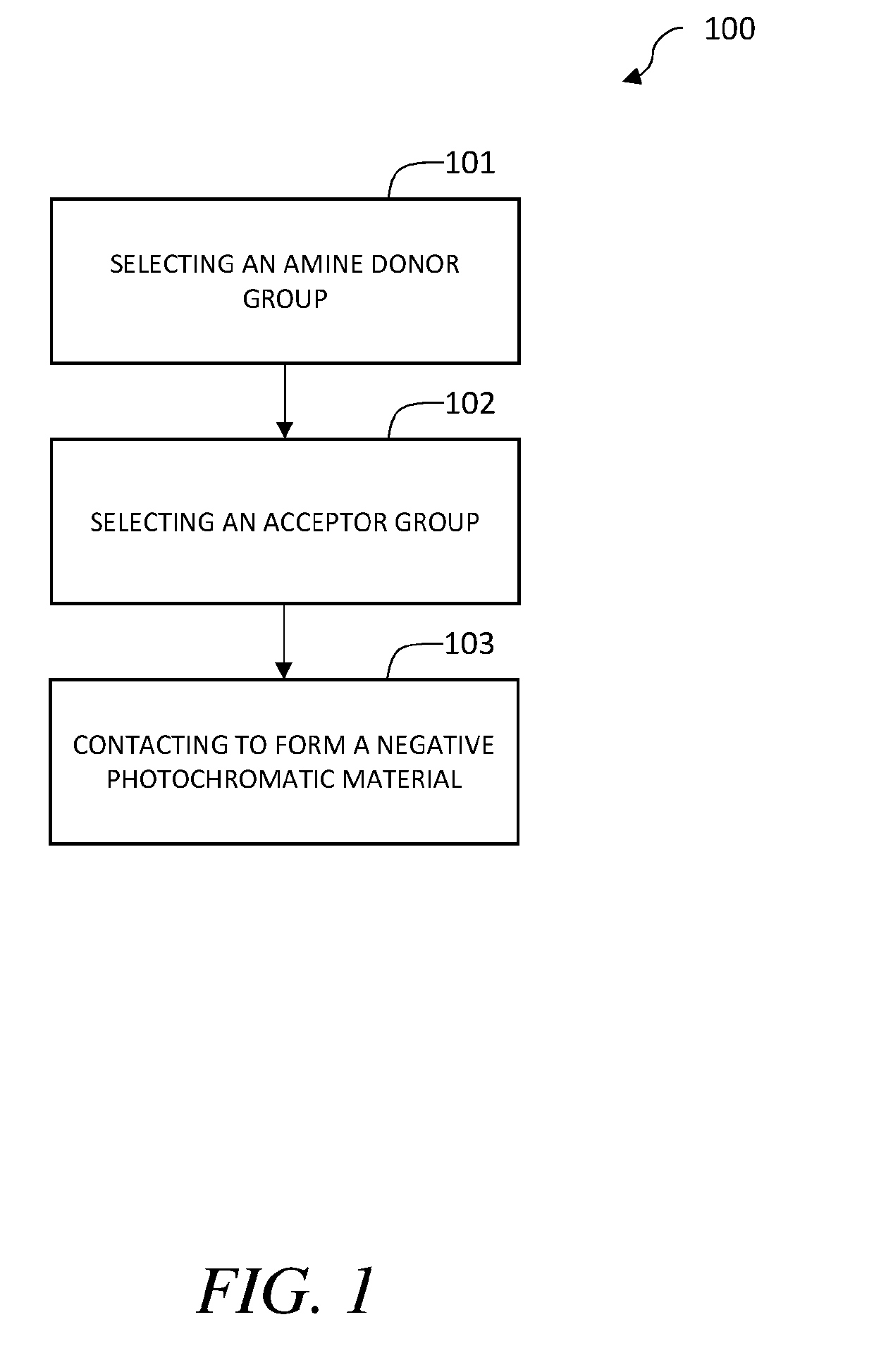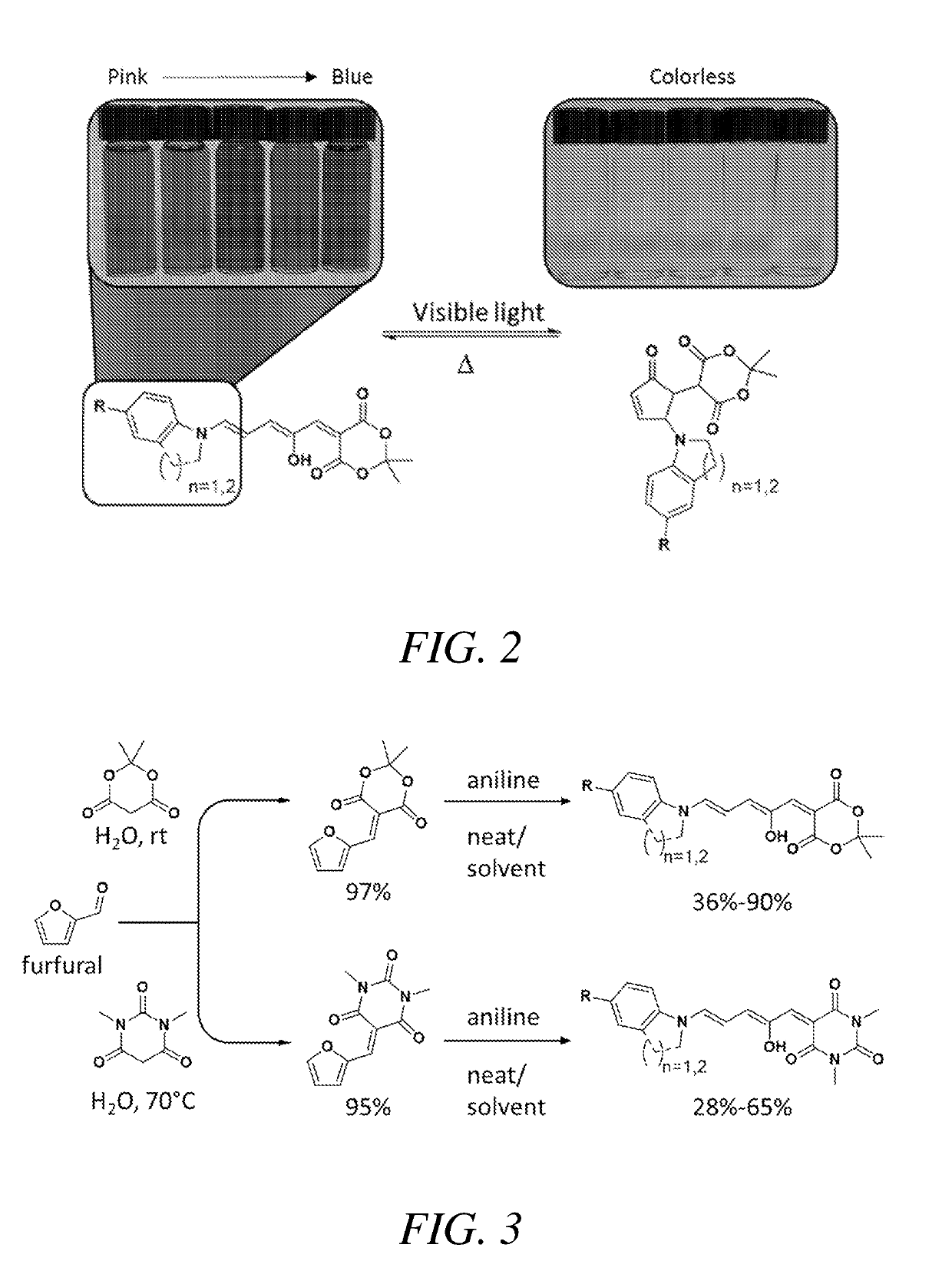Negative photochromic materials with tunable properties
a technology of photochromic materials and properties, applied in the field of negative photochromic materials with tunable properties, can solve the problems of limiting the ability to tune wavelength, affecting the potential use of these compounds, and unable to achieve reversible switching in polymeric systems
- Summary
- Abstract
- Description
- Claims
- Application Information
AI Technical Summary
Benefits of technology
Problems solved by technology
Method used
Image
Examples
example 1
[0033]This example describes, among other things, the use of secondary anilines as donors to produce DASA molecules with highly tunable absorption wavelengths. (FIG. 2). The wavelength may be altered by, for example, altering the group para to the nitrogen as well as using cyclic secondary anilines such as tetrahydroquinoline or indoline. Complete photoswitching from a colored to a colorless form was observed in a range of solvents and in a polymer matrix. Embodiments provide a family of photochromic material which can be prepared economically and easily. Further provided is a family of photochromic material which provides the ability to control the conversion between forms of the photochromic material with wavelengths that range between about 400 and about 800 nm.
[0034]A class of highly tunable visible and near-infrared donor-acceptor Stenhouse adduct (DASA) photoswitches were efficiently synthesized and characterized to reveal unique structure property relationships. Variations in...
synthesis example 2
Synthesis of Photochromic Material with Meldrum's Acid Acceptor
[0040]
[0041]222.22 mg (1 mmol) of Meldrum's acid furan adduct and 250 μL (2 mmol) tetrahydroquinoline were combined and allowed to stir for 4 hours. 2 mL of THF was added to the resulting residue and the residue was broken up and sonicated. This was then filtered to yield 184 mg (51% yield).
synthesis example 3
Synthesis of Photochromic Material with Barbituric Acid Acceptor
[0042]
[0043]234.21 mg (1 mmol) Barbituric acid furan adduct and 103 μL (1 mmol) of diethylamine were stirred in 4 mL THF. After 45 minutes, the precipitate was filtered and washed with diethyl ether. The product was then allowed to dry.
PUM
| Property | Measurement | Unit |
|---|---|---|
| wavelengths | aaaaa | aaaaa |
| wavelengths | aaaaa | aaaaa |
| wavelengths | aaaaa | aaaaa |
Abstract
Description
Claims
Application Information
 Login to View More
Login to View More - R&D
- Intellectual Property
- Life Sciences
- Materials
- Tech Scout
- Unparalleled Data Quality
- Higher Quality Content
- 60% Fewer Hallucinations
Browse by: Latest US Patents, China's latest patents, Technical Efficacy Thesaurus, Application Domain, Technology Topic, Popular Technical Reports.
© 2025 PatSnap. All rights reserved.Legal|Privacy policy|Modern Slavery Act Transparency Statement|Sitemap|About US| Contact US: help@patsnap.com



